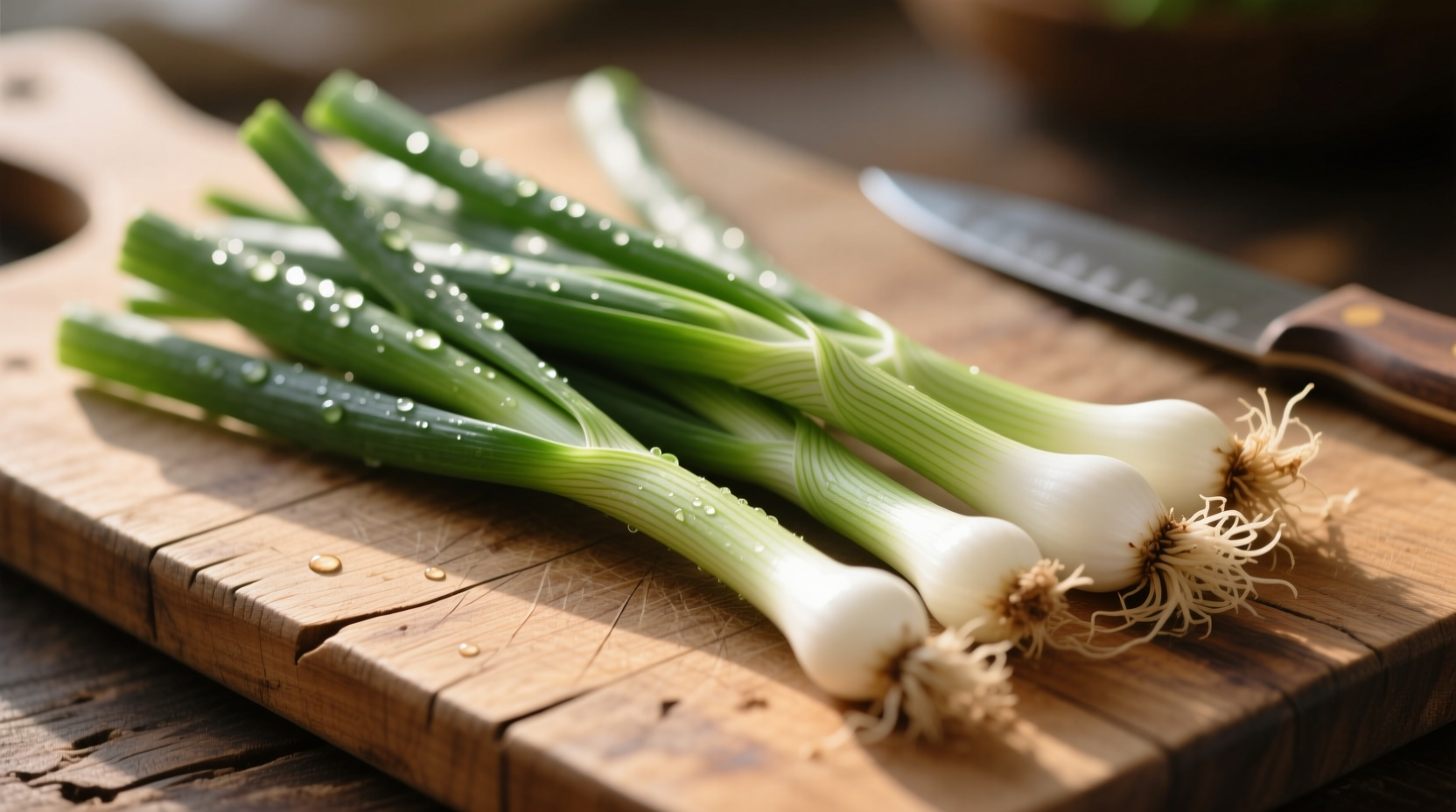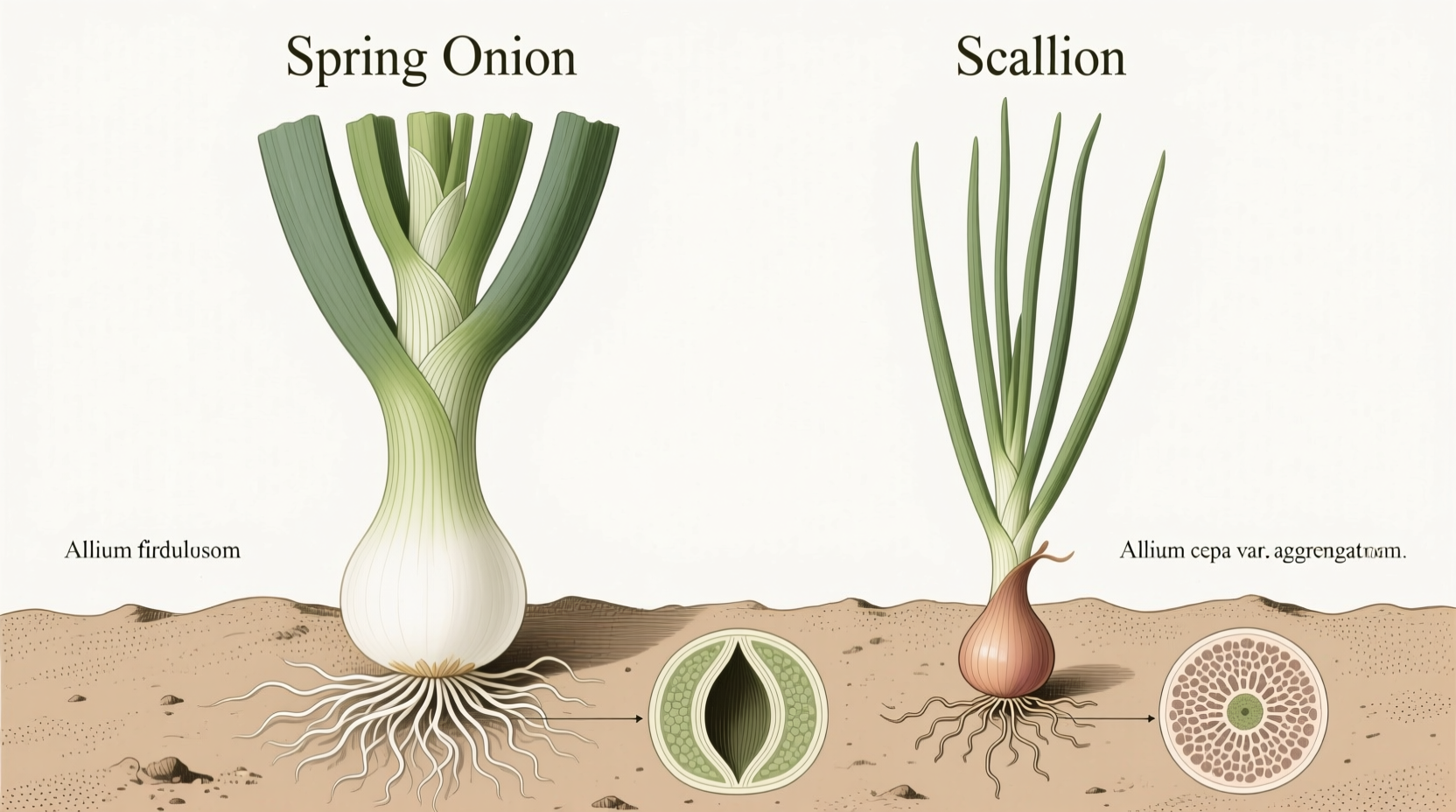Confused about whether spring onions and scallions are different ingredients? You're not alone. This common kitchen conundrum has left home cooks and professional chefs alike wondering if they're grabbing the right item at the grocery store. Let's clear up the confusion once and for all with definitive information you can trust.
Understanding the Terminology: What's Really in Your Produce Section
When you're standing in the grocery store produce aisle, the labels can be misleading. The reality is simple: spring onion and scallion refer to the exact same vegetable—Allium fistulosum, harvested young before the bulb matures. The different names stem purely from regional language preferences, not botanical differences.
According to the USDA National Nutrient Database, these vegetables contain identical nutritional profiles regardless of what label they carry. Both provide 32 calories per 100g, with significant amounts of vitamin K, vitamin C, and folate. The confusion arises from inconsistent labeling practices across different markets and regions.
| Region | Common Term | Rarely Used Term | Additional Notes |
|---|---|---|---|
| United States | Scallion | Spring onion | "Green onion" is also widely used |
| United Kingdom | Spring onion | Scallion | Rarely called "green onion" |
| Australia/New Zealand | Spring onion | Scallion | "Shallot" sometimes incorrectly used |
| Canada | Mixed usage | - | Depends on regional influences |
Visual Identification Guide for Confident Shopping
Regardless of what label you see, here's how to identify these vegetables:

- Appearance: Long green stalks with small, undeveloped white bulbs (less than 1 inch in diameter)
- Texture: Crisp throughout with no bulb separation
- Smell: Mild onion aroma without strong pungency
- Common misidentification: Mistaking them for immature shallots or green garlic
When the Terms Might Actually Mean Different Things
While spring onions and scallions are generally synonymous, there are specific contexts where distinctions emerge:
In some specialty markets, "spring onion" might refer to a slightly more mature vegetable with a small but developed bulb, while "scallion" indicates the youngest, most immature version. However, this distinction is inconsistent and not botanically accurate. The Royal Horticultural Society confirms that Allium fistulosum remains the same plant regardless of harvest timing within its immature stage.
True differentiation occurs when comparing these to similar vegetables:
- Green garlic: Has a softer texture and garlic-like flavor (from immature garlic plants)
- Shallots: Develop distinct clustered bulbs and have a more complex flavor profile
- Chives: Entirely hollow stalks with no bulb development
Practical Cooking Applications
Understanding that spring onions and scallions are identical means you can confidently substitute them in any recipe. Professional chefs at the Culinary Institute of America consistently treat these as interchangeable ingredients.
When to use the green parts:
- Garnishing finished dishes (soups, tacos, stir-fries)
- Raw applications where mild onion flavor is desired
- Blending into sauces and dressings
When to use the white bulb parts:
- Sautéing as flavor base for soups and stews
- Adding to omelets and frittatas
- Quick-pickling for condiments
Regional Recipe Adaptation Guide
When following international recipes, use this quick reference to avoid confusion:
- American recipe calling for scallions: Use what's labeled as spring onions in UK/AU markets
- British recipe calling for spring onions: Grab scallions in US/CA stores
- Asian recipes: Often specify "green onions" which are identical to both
- French recipes: May use "ciboule" which refers to the same vegetable
The University of California Cooperative Extension confirms that all these terms refer to the same agricultural product with no meaningful differences in cultivation or harvesting practices.
Common Misconceptions Debunked
Let's address some persistent myths about these vegetables:
- Myth: Spring onions have a stronger flavor than scallions
- Reality: Flavor intensity depends on freshness and variety, not the name
- Myth: They're baby versions of regular onions
- Reality: They're a different species (Allium fistulosum vs Allium cepa)
- Myth: The green parts are less flavorful than the white bulbs
- Reality: Green parts offer milder flavor; white parts provide more onion punch
Growing Your Own for Maximum Freshness
For the freshest possible product, consider growing your own. According to horticultural research from Cornell University, these vegetables:
- Require minimal space (can grow in containers)
- Reach harvestable size in 60-80 days
- Can be harvested multiple times through "cut-and-come-again" method
- Thrive in USDA hardiness zones 3-9
When harvesting, cut about 1 inch above the soil line to allow regrowth. Store harvested stalks in a glass of water in the refrigerator for up to 10 days.
Storage Tips for Extended Freshness
Proper storage significantly extends shelf life:
- Wrap in slightly damp paper towel and store in vegetable crisper
- Place cut ends in water and cover with plastic bag in refrigerator
- Freeze chopped pieces for cooking applications (not for raw use)
- Use within 7-10 days for optimal flavor and texture











 浙公网安备
33010002000092号
浙公网安备
33010002000092号 浙B2-20120091-4
浙B2-20120091-4